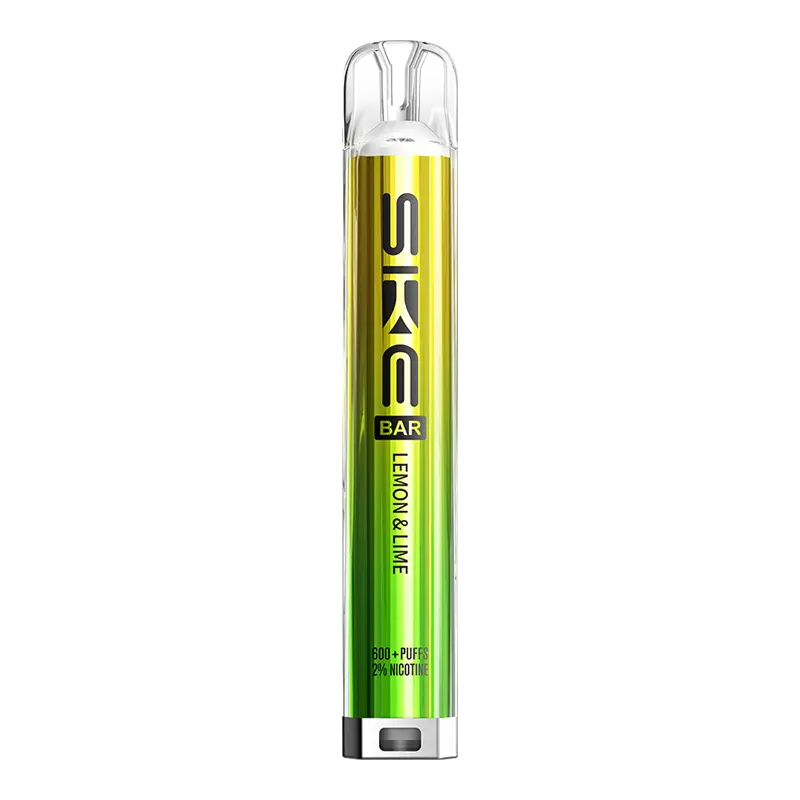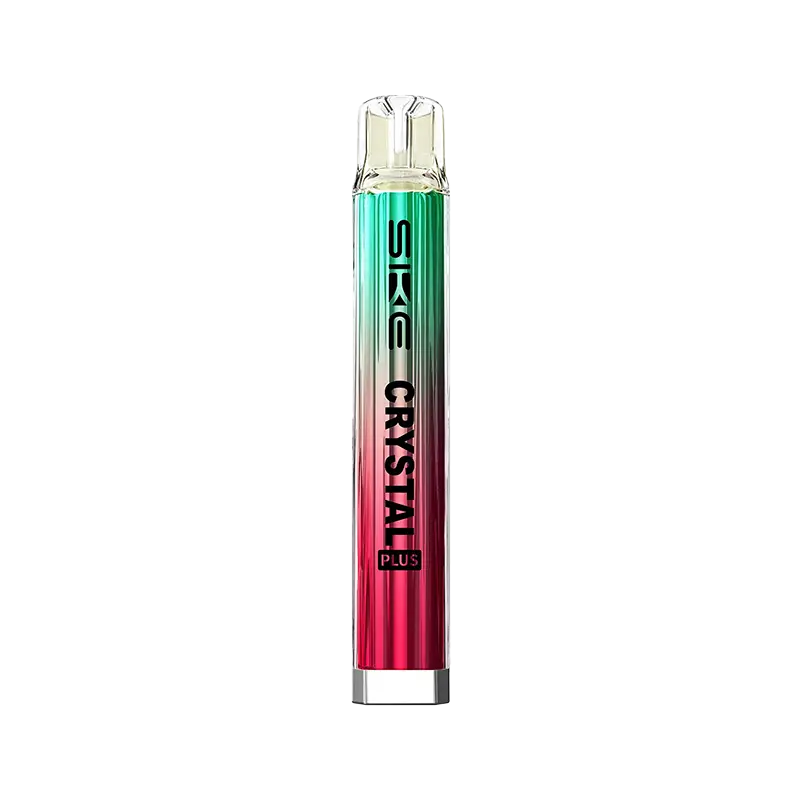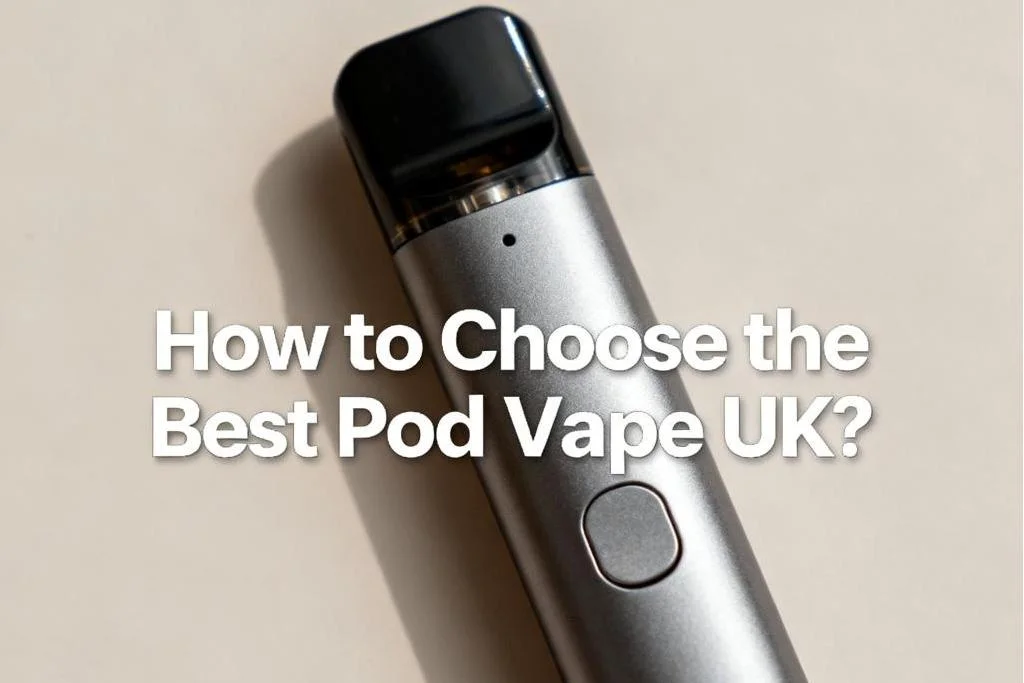What is Propylene Glycol in Vape?
Vaping enthusiasts often find themselves surrounded by a cloud of questions, especially when it comes to the components of their favorite vape juices like Propylene Glycol (PG). What is propylene glycol in vape? Let's find out in this comprehensive guide.

What is Propylene Glycol?
Propylene Glycol (PG) is a synthetic, colorless, and odorless liquid that is slightly viscous and highly soluble in water. It's classified as a type of alcohol and widely used across various industries due to its versatility and safety when used in appropriate amounts. PG serves multiple purposes, such as a solvent, humectant, preservative, and carrier fluid in food, cosmetics, pharmaceuticals, and industrial applications.
What Is Propylene Glycol Made Of?
1. Base Ingredients
Propylene Glycol is made from propylene oxide, a chemical compound that serves as the primary raw material. Propylene oxide itself is derived from hydrocarbons found in natural gas or crude oil.
2. Chemical Structure
The chemical formula of Propylene Glycol is C₃H₈O₂, and its structure consists of:
Three carbon atoms (C) in a chain.
Eight hydrogen atoms (H).
Two hydroxyl (-OH) groups, which give it its alcohol properties and make it hydrophilic (water-soluble).
Propylene Glycol (PG) Attributes
1. Chemical Properties
- Colorless and Odorless: PG is a clear, tasteless, and odor-free liquid, making it easy to incorporate into food, cosmetics, and pharmaceuticals.
- Water-Soluble: Its high solubility in water allows it to blend effortlessly with other ingredients, ensuring uniformity in mixtures.
- Low Viscosity: The thin consistency of PG enables smooth flow and easy handling in liquid formulations.
2. Stability and Safety
- Non-Toxic: Recognized as generally safe (GRAS) by the FDA for consumption in specified amounts.
- Stable Under Heat: PG remains stable at a range of temperatures, making it ideal for applications requiring heat, such as vaping or industrial processes.
- Preservative Qualities: It inhibits microbial growth, extending the shelf life of products in which it is used.
3. Functional Versatility
- Solvent: Acts as an excellent carrier for flavors, nicotine, and active ingredients.
- Humectant: Retains moisture, preventing products from drying out.
- Throat Sensation: Provides a subtle tingling or warming sensation when inhaled or consumed.
What Is Propylene Glycol in Vape?
In vaping, Propylene Glycol (PG) is one of the primary base ingredients used in e-liquids, alongside Vegetable Glycerin (VG). PG contributes significantly to the vaping experience by acting as a carrier for flavor concentrates and nicotine.
Propylene Glycol (PG) in Vaping Attributes
1. Flavor Enhancement
PG binds effectively with flavor concentrates, delivering sharp, well-defined taste profiles. Its flavor-carrying capability ensures that even complex or subtle notes in e-liquids are vividly experienced by the user.
2. Throat Hit
PG is highly valued in vaping for its ability to replicate the throat hit of traditional smoking. The sensation can be adjusted based on the PG content in the e-liquid, making it a key factor for smokers transitioning to vaping.
3. Smooth Wicking
PG's thin consistency ensures that e-liquids flow efficiently through the wicking material, particularly in smaller vaping devices or those designed for Mouth-to-Lung (MTL) vaping.
4. Nicotine Efficiency
Due to its excellent solubility, PG evenly distributes nicotine in e-liquids. It offers consistent delivery and absorption of nicotine with every puff, contributing to a satisfying and predictable vaping experience.
5. Device Compatibility
PG-based e-liquids are compatible with a wide range of vaping devices, particularly those with smaller coils or lower power outputs. Its low viscosity prevents issues such as clogging or flooding, which can occur with higher VG e-liquids.
6. Balanced Vapor Production
While PG produces less visible vapor compared to VG, it compensates by supplying clearer flavor and a stronger throat hit, appealing to vapers who prioritize sensation and taste over dense clouds.

Is Propylene Glycol Safe to Vape?
Regulatory Assurance
As the FDA stamps its approval on PG as a safe additive in food products, the regulatory imprimatur extends to its application in e-liquids. This stamp is a testament to rigorous scrutiny, assuring vapers that PG meets stringent safety standards.
Safety Dossier Beyond Vaping
PG has proven its mettle in diverse applications with its extensive deployment in pharmaceuticals, cosmetics, and even theatrical fog machines. This multifaceted utility finds a solid foundation for its safety in vaping.
Individual Tolerance
An aspect often overlooked is individual tolerance. While the majority experiences no adverse effects, a minority may report mild irritations. The vaping landscape, albeit transformative, is relatively young. Consequently, studies exploring the extended impact of inhaling PG over decades are nascent. In the spirit of responsible vaping, vapers embark on this journey while remaining open to insights that time and ongoing research may unveil.

How Do I Know If I'm Sensitive to PG in Vaping?
Sensitivity to Propylene Glycol (PG) in vaping manifests as physical discomfort or mild allergic reactions when using e-liquids with higher PG content. If you're wondering whether you're sensitive to PG, here’s a detailed guide on how to recognize the signs, distinguish them from other causes, and address the issue.
1. Recognizing Symptoms of PG Sensitivity in Vaping
- Throat and Mouth Irritation:
PG sensitivity commonly causes a scratchy, sore, or burning sensation in the throat or mouth, which intensifies with higher PG content in the e-liquid.
- Dryness:
PG can dehydrate tissues, leading to dryness in the mouth, throat, or nasal passages and often causing persistent discomfort or increased thirst.
- Respiratory Symptoms:
Sensitivity can sometimes cause mild respiratory issues like coughing, wheezing, or chest tightness that worsen with high-PG e-liquids.
- Skin Reactions:
If e-liquid containing PG comes into contact with your skin, it could cause redness, itching, or mild rashes, particularly if you’re prone to dermatitis or have sensitive skin.
- Allergic-like Symptoms:
PG sensitivity might mimic mild allergy symptoms, including nasal congestion, sneezing, or watery eyes.
2. Testing for PG Sensitivity
- Switch to Low-PG or Max VG E-Liquids:
Gradually reduce the PG content in your e-liquids. If symptoms diminish when using a high VG or max VG blend (e.g., 30/70 PG/VG, 20/80 PG/VG, or 100% VG), it’s likely you’re sensitive to PG.
- Skin Patch Test:
Dab a small amount of PG-based e-liquid on a patch of skin (like your inner arm) and wait for 24 hours. Redness, irritation, or itching may indicate sensitivity.
- Consult a Professional:
If symptoms persist or are severe, visit a doctor or allergist. They can conduct proper tests to identify whether PG or another substance is causing your reaction.
3. Addressing PG Sensitivity in Vaping
- Switch to High VG E-Liquids:
Use max VG e-liquids. These are smoother on the throat and produce dense vapor but may require sub-ohm or direct-to-lung devices due to their thickness.
- Explore PG-Free E-Liquids:
Some brands offer completely PG-free options, using alternative bases like distilled water or natural extracts.
- Hydrate Regularly:
Counteract PG’s drying effect by drinking more water throughout the day, especially before and after vaping.
- Use Compatible Devices:
Ensure your device can handle high VG or PG-free e-liquids. Many pod systems or MTL setups are not optimized for these thicker blends.
Briefly speaking, understanding PG's role, characteristics, and safety allows vapers to make informed choices. Embrace the blend of science and satisfaction that propylene glycol brings to your vaping experience and embark on your vaping journey with confidence!
TABLE OF CONTENTS
- What is Propylene Glycol?
- What Is Propylene Glycol Made Of?
- Propylene Glycol (PG) Attributes
- What Is Propylene Glycol in Vape?
- Propylene Glycol (PG) in Vaping Attributes
- Is Propylene Glycol Safe to Vape?
- Regulatory Assurance
- Safety Dossier Beyond Vaping
- Individual Tolerance
- How Do I Know If I'm Sensitive to PG in Vaping?
- 1. Recognizing Symptoms of PG Sensitivity in Vaping
- 2. Testing for PG Sensitivity
- 3. Addressing PG Sensitivity in Vaping























